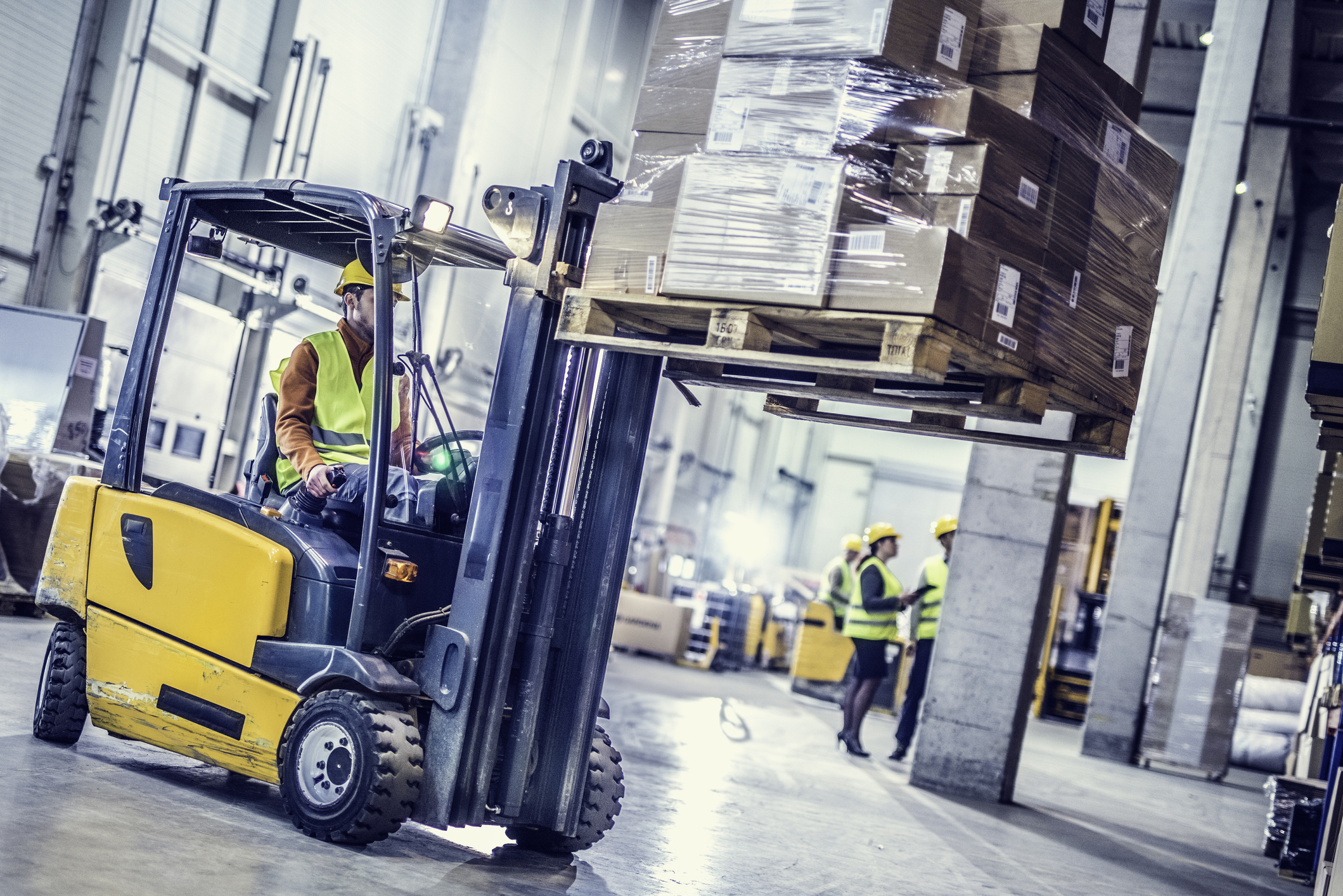Forklift Safety: Simple Mistakes Lead to Costly Results
Does your facility have storage space or a warehouse? Do you utilize forklifts? Do your personnel and your forklifts share the same space throughout the day? Chances are, the answer is yes. And although forklifts can make tasks easier and more time-efficient, they can also cause serious injury.
Here’s a cautionary tale for you. Whether you work at a dealership or any facility with a warehouse, hopefully, you can learn from this story to avoid a similar incident before it damages your business:
One morning a crew was unloading material from the loading dock to the warehouse.
The crew used a forklift to move the heaviest boxes – moving the material more efficiently. At first, the forklift helped to move the process along quickly.
While the forklift operator was speedily moving material back and forth from the dock to the warehouse shelves, employees were also busily carrying crates in the same area.
An employee loaded a crate into its dedicated storage space in the warehouse and started walking back to the loading dock. He also took out his cell phone and decided to take a quick call on his way back.
Meanwhile, the forklift operator dropped some material off in the warehouse. Ready to return to the loading dock, he shifted the engine to reverse and backed up into the loading area rather than turning the forklift forward.
Distracted, the employee talking on his cell phone walked into one of the operator’s blind spots.
Before anyone could react, the left track of the forklift crushed the employee’s foot. The man was rushed to the hospital and received medical treatment within minutes, but the damage was done, and as a result, one of the man’s toes had to be amputated.
Many facilities have established warehouses.
For dealers, this is often an extension of the parts department. Warehouses have their own rules and guidelines, particularly when working around powered industrial trucks, such as forklifts. To prevent this kind of accident and to keep everyone’s toes intact, we recommend these guidelines:
OSHA Training Requirements
- Regulations require anyone operating a forklift to receive training on properly and safely operating the machine. This training comes in two forms; first in the classroom and second in a hands-on training and evaluation session.
- This first part of the training must cover facility specifics and may require a separate instructor.
- The second part of the training, which requires a hands-on test, must be conducted by an individual with the “knowledge, training and experience to train forklift operators and evaluate their performance.”
- Before an employee operates a forklift, they must receive both formal and practical training.
- The practical training must be overseen by an adequately qualified trainer and completed in a safe location. (An employee can only operate the forklift for the test if they possess the classroom training knowledge.)
- A refresher training course that evaluates the level of the operator’s skill is required when one of the following takes place:
- An operator is found to be unsafely operating a forklift.
- An accident or near accident takes place.
- There is a change of equipment.
- There is a significant change in the workplace.
- An evaluation indicates the need.
- Once every three years, a complete evaluation of each operator’s performance must be conducted.
Preventative Steps for all Staff
- Limit cell phones or other electronic device use while traveling through the warehouse as these are a source of pedestrian distraction. Powered industrial truck drivers should already be restricted from using these devices while operating equipment.
- Wear bright, highly visible colors while walking in the warehouse or an area where heavy machinery operates.
- All personnel around dangerous equipment should be trained on spatial awareness and be restricted from the loading dock when trucks are actively loading or unloading materials.
- Warning signs and other cautionary material should be strategically placed in areas where collision is a high risk.
- Identify an employee lane after conducting a traffic flow analysis within the warehouse.
- Establish and maintain safety rules around right-of-way, and pedestrian-only paths.
- Implement a “Steel Toe Shoe Only” policy for all warehouse employees. Steel toe caps may also be provided for visitors if assessed as necessary.
Forklifts are used frequently.
Make sure you have a system in place that protects employees from potentially losing their career (and the use of their feet.) Forklift training is one of the many topics KPA covers in our extensive course catalog. Pair this technology and consulting expertise to truly protect your business.
If you have any additional questions regarding KPA training or Forklift safety in general, contact us.

